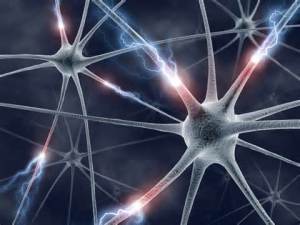Often things happen right before our eyes and we don’t even see them. How many times in your life have you looked at your watch and a second later realize that you do not know what time it is? This is because of how your mind works in conjunction with your brain. The way we perceive objects and people is critical when it comes to personal safety and not picking up on a few minor cues can cost you your life. For this article I’m again borrowing a bit of research from the book, Incognito: The secret lives of the brain by David Eagleman. In this fabulous book Mr. Eagleman delves into how your brain works and perception is a key component to awareness. You only perceive the information you are seeking despite the eye’s ability to see vast amounts of things. Here is an example to illustrate the point Mr. Eagleman uses in his book.
Take a look at the picture below called The Unexpected Visitor painted by Yarbus in 1967.
Look at the picture and estimate how old you think each person is?
Look at the picture and tell me what activity the family was doing before the visitor arrived?
Finally, look at the picture and tell me about what time of day it is?
Based on research, when you were asked to identify the ages of the people in the picture, your eyes looked at the faces of each person.
When I asked you what the family was doing before the visitor arrived you looked at the table, the doorway and the instrument in the corner.
When I asked you what time of day it is, your eyes likely went to the windows and the light reflecting off the walls trying to determine if it was morning or mid-afternoon.
Now, without scrolling back up and looking at the photo, can you tell me what the people in the picture were wearing?
At this point most of you will not be able to recall this information because your mind didn’t need to know that, so your eyes did not see in detail the clothes. Your brain forces your eyes to look at the specific areas of the picture you need to see, so you can gain the information needed and though you noticed they had clothes on… your brain did not think it was important to capture details about the clothes. As you can see there is a vast difference between seeing and perceiving. How does this apply to personal defense? I’m glad you asked and since you stuck with me this far, allow me to explain.
When I worked a patrol beat people used to get annoyed with me and I got complaints because people said, “He never looks me in the eyes.” To this day I still have a hard time looking someone in the eyes when we talk or interact because I’ve been conditioned to conduct a threat assessment of everyone I meet and a security assessment of all the places I go into. While you may have captivating blue eyes, your eyes are very little threat to me. What I’m looking at is your hands, and where your hands are in relation to the common places people keep weapons like, your waistband, pockets or the small of the back.
I’m watching to see if your fists are clenched and if they are then I will glance at your feet to see if you are in a balanced and bladed (fighting) stance. Hands access weapons, feet tell me your intentions, eyes have their uses and can be windows into the soul, but your eyes and soul can’t hurt me.
When entering a building I always try to look for several important pieces of information. Where are the entrances or exits? What items in the room provide concealment (a place to hide) and what offers cover (something that will stop bullets). Who is in the room and what threat do they pose to me, right now or what areas are nearby they can disappear into or access that might pose a threat to me later.
This is the information my brain is seeking so my eyes naturally look at hands, waistbands, windows, doors, walls, bookshelves, furniture, etc. If you asked me what some of the people I met were wearing, I doubt I could recall that information right away because even though I “saw it” I didn’t “perceive it.”
Circumstances however can dictate what information is a priority and as a result your brain will force your eyes to look at certain items. Another example from my patrol days was when I was in a foot chase with a suspect. He was running away from me at the time and had quite a good head start when the chase started. I immediately focused on what he was wearing, his skin tone, height, approximate weight and the direction he was running. Why? I “perceived” those pieces of data because I knew my suspect had a good chance of getting away and I would need this information to broadcast a description to responding units and to set up a perimeter based on the area he was in and the direction he was traveling.
Using these examples above, it is time for you to put this into practice in your day to day life. Situational awareness is talked about in almost every personal defense circle but there is precious little information about how to get better at recognizing potential danger.
Armed with the information above I want you to look at the next photo posted below of a typical shopping mall in America. Before you look at this photo I want you to think about what information you need to do a threat assessment of the area pictured. Look at the picture for about 10 seconds and then answer the questions below:
What pieces of structure provide concealment?
Which pieces of structure provide hard cover?
Where is the nearest exit?
How many people are above you on the second floor?
Is that hallway to the right an exit and what is beyond the door the delivery man is next to?
If the delivery man is holding a gun in the hand we can’t see… what are you going to do?
You can apply the above example to everywhere you go. As you just learned it also takes a few seconds to make this assessment. When you enter a new place or unfamiliar surroundings is it worth taking a few seconds to scan with your eyes and let your mind perceive the information necessary to maximize your safety?
Here is one more picture. You need to get to the office building at the end of the alleyway. Before you enter, scan and decide:

Where can potential threats hide?
Cover? Concealment?
Escape routes?
Remember that your eyes are optimized by your brain to seek only the data you perceive as necessary. To be safer and more aware, you will have to train your brain to tell your eyes what data to look for. Consider the eye movements you are making as you read this article. The eyes are jumping from spot to spot rather than moving smoothly across the page. If you don’t believe me, watch someone else’s eyes while they read.
Your brain does not need a full analysis of the world around you to operate. You’ve grown up conditioned to operate based on being able to perceive the few particulars needed to navigate. Your mind only encodes certain pieces of data and the rest of the picture it fills in with assumptions based on previous physical and social encounters. You will have to re-condition your mind to start perceiving potential threats and only then will you truly be on the path towards situational awareness.
As always, stay safe and Godspeed.
Scott S – One Weapon, Any Tool: Your mind is the weapon, everything else is just a tool!
Find us on Facebook, & Twitter: @1weaponanytool
Visit the web site for training courses: http://www.oneweaponanytool.com


